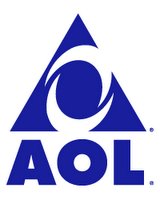
AOL Search announced the year's top searches based on the topics that received the highest volume of online queries on AOLSearch.com, the AOL.com portal and the AOL service during 2005.
"Millions of people search online through AOL Search for a wide spectrum of things, but there are those terms that are looked-up more frequently than others," said Jim Riesenbach, senior vice president of AOL Search and Directional Media. "From news and people that grab attention to popular products and common queries, the most searched for topics online during 2005 are a reflection of what was top of mind or what people wanted to find more information about."
"Lottery" emerged as the most searched word in 2005, followed by "horoscopes" (no. 2) and "tattoos" (no. 3). New search terms that emerged in 2005 include the addictive puzzle "Sudoku", the irregular minting of the new "Wisconsin Quarter" and the global music event "Live 8."
Here's the complete list:

Top Words: 1) Lottery; 2) Horoscopes; 3) Tattoos; 4) Lyrics; 5) Ringtones; 6) IRS; 7) Jokes; 8) American Idol; 9) Hairstyles; 10) NASCAR.

Top Celebrities: 1) Paris Hilton; 2) Oprah Winfrey; 3) Jessica Simpson; 4) Britney Spears; 5) Lindsay Lohan; 6) Pamela Anderson; 7) Angelina Jolie; 8) Jesse McCartney; 9) Hilary Duff; 10) 50 Cent.

Top Video Search Results: 1) 50 Cent; 2) Paris Hilton; 3) Tsunami; 4) Madonna; 5) Angelina Jolie; 6) Jessica Simpson; 7) Ciara; 8) Pamela Anderson; 9) American Idol; 10) Star Wars.
Top News Stories: 1) Natalee Holloway; 2) The tsunami; 3) Hurricanes; 4) Pope John Paul II; 5) Gas prices; 6) Live 8; 7) Terri Schiavo; 8) Earthquakes; 9) Rosa Parks; 10) The bird flu.

Top Celebrity Couples: 1) Brad Pitt and Jennifer Aniston; 2) Donald Trump and Melania Knauss; 3) Kenny Chesney and Renee Zellweger; 4) Brad Pitt and Angelina Jolie; 5) Jessica Simpson and Nick Lachey; 6) Bow Wow and Ciara; 7) Tom Cruise and Katie Holmes; 8) Pamela Anderson and Tommy Lee; 9) Prince Charles and Camilla; 10) Rob and Amber.
Top Athletes: 1) Danica Patrick; 2) Lance Armstrong; 3) Serena Williams; 4) Eddie Guerrero; 5) John Cena; 6) Maria Sharapova; 7) Derek Jeter; 8) Anna Kournikova; 9) Jackie Robinson; 10) Dale Earnhardt, Jr.
Top Bands: 1) Green Day; 2) My Chemical Romance; 3) Fall Out Boy; 4) The Killers; 5) Black-Eyed Peas; 6) Slipknot; 7) G-Unit; 8) The Wiggles; 9) Pussycat Dolls; 10) Good Charlotte.
Top Songs: 1) "We Belong Together" by Mariah Carey; 2) "Hollaback Girl" by Gwen Stefani; 3) "My Humps" by Black Eyed Peas; 4) "Candy Shop" by 50 Cent; 5) "Listen to Your Heart" by DHT; 6) "Laffy Taffy" by D4L; 7) "Gold Digger" by Kanye West; 8) "Disco Inferno" by 50 Cent; 9) "La Tortura" by Shakira; 10) "Obsession" by Frankie J.
Top TV Shows: 1) American Idol; 2) Big Brother; 3) Wheel of Fortune; 4) Survivor; 5) Oprah Winfrey Show; 6) Days of Our Lives; 7) Lost; 8) The Apprentice; 9) Today Show; 10) Good Morning America.
Top Movies: 1) Harry Potter; 2) Star Wars; 3) Napoleon Dynamite; 4) Dukes of Hazzard; 5) Fantastic Four; 6) War of the Worlds; 7) Lord of the Rings; 8) Batman Begins; 9) White Noise; 10) Constantine.
Top Cars: 1) Ford Mustang; 2) MINI Cooper; 3) Scion; 4) Chevrolet Corvette; 5) Ford GT; 6) Hummer; 7) Dodge Charger; 8) Porsche; 9) Chevrolet Camaro; 10) Honda Civic.
Top Toys: 1) Barbie; 2) Elmo; 3) Bratz; 4) Polly Pockets; 5) Dora the Explorer; 6) Thomas the Tank Engine; 7) Care Bears; 8) American Girl; 9) Legos; 10) Scooters.
Top Gadgets / Gadget Brands: 1) iPod; 2) Cell Phones; 3) Playstation 3; 4) Xbox 360; 5) mp3 Players; 6) XM Radio; 7) Laptops; 8) Palm Pilot; 9) Sirius Radio; 10) GPS.
Top Fashion Brands: 1) Louis Vuitton; 2) Coach; 3) Dooney & Bourke; 4) Baby Phat; 5) Nike; 6) Lacoste; 7) Uggs; 8) Steve Madden; 9) Bebe; 10) Juicy Couture.
Top Denim Brands: 1) Levi's; 2) Apple Bottoms Jeans; 3) Seven Jeans; 4) Lucky Jeans; 5) True Religion Jeans; 6) Wrangler Jeans; 7) Lee Jeans; 8) Pepe Jeans; 9) Evisu Jeans; 10) Diesel Jeans.


